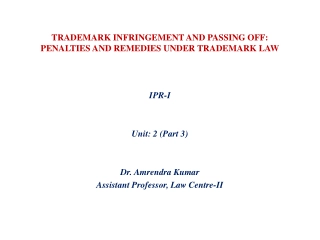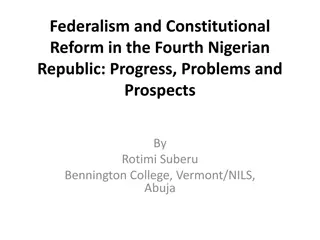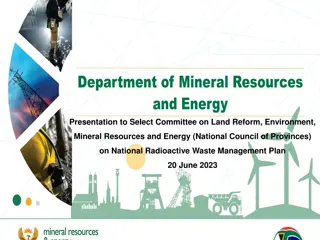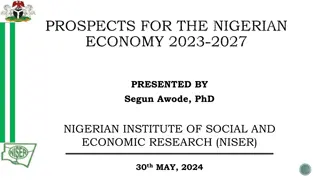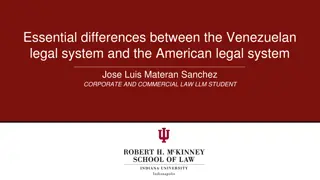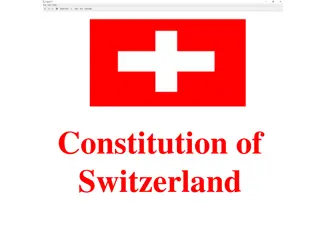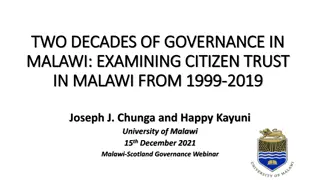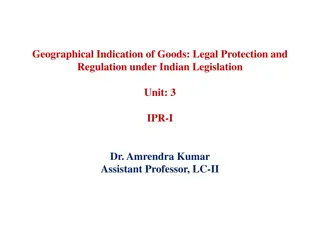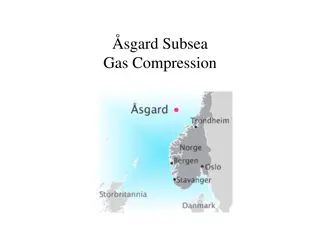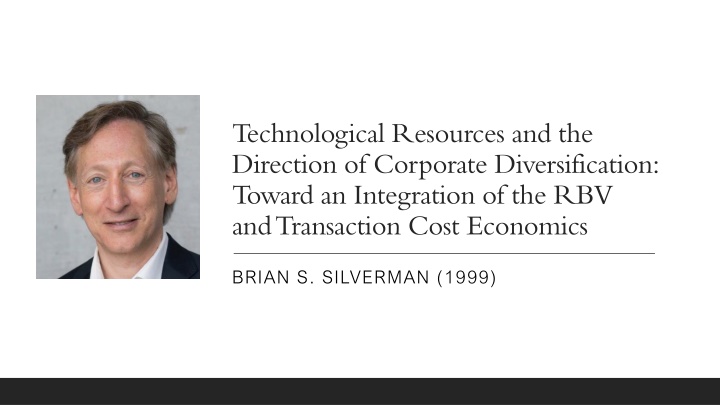
Technological Resources and Corporate Diversification
Explore the integration of Resource-Based View (RBV) and Transaction Cost Economics in understanding corporate diversification, focusing on operationalizing technological resources. Discusses the status of literature on RBV and diversification theory, hypotheses development, and alternative ways to utilize resources.
Download Presentation

Please find below an Image/Link to download the presentation.
The content on the website is provided AS IS for your information and personal use only. It may not be sold, licensed, or shared on other websites without obtaining consent from the author. If you encounter any issues during the download, it is possible that the publisher has removed the file from their server.
You are allowed to download the files provided on this website for personal or commercial use, subject to the condition that they are used lawfully. All files are the property of their respective owners.
The content on the website is provided AS IS for your information and personal use only. It may not be sold, licensed, or shared on other websites without obtaining consent from the author.
E N D
Presentation Transcript
Technological Resources and the Direction of Corporate Diversification: Toward an Integration of the RBV and Transaction Cost Economics BRIAN S. SILVERMAN (1999)
Introduction Research gaps in RBV and current paper s contributions: Empirical: although the RBV has been touted as particularly well suited to understanding diversification, the operationalization of this framework has been limited to broad characterization of resources and the industries in which they might be fruitfully applied. Contribution: to develop a new operationalization of technological resources as a measure that can be adopted in empirical research. Theoretical: resource-based approach to diversification has generally under emphasized the possibility that firms can exploit resources through market arrangements rather than through expansion of corporate boundaries (exceptions include Teece 1980, 1982). Contribution: to examine the assumption that economic rent-generating resources are too asset specific to allow contracting.
Status of the Literature on RBV and Diversification Theory: application-specificity inherent in firm resources produces a tradeoff Enables a firm to extract a sustainable economic rent stream from these assets, but; Makes it nearly impossible for the firm to transplant them or utilize them effectively in a new context. Empirical approach: imperfect operationalization of the resources construct Relatedness between two industries measured via the SIC system. Shortcomings:the SIC system is based on product (output) rather than on resource (input) characteristics. R&D intensity, advertising intensity, and other such investmentsas proxies of resources. Shortcomings:the proxies do not capture the constraints that potentially valuable resources can realize this economic value in only a few applications.
Hypotheses Development Empirical relatedness literature proposes that firms tend to diversify into: industries that rely on similar patterns of human expertise to those required in their extant industries (Farjoun, 1994; Coff & Hatfield, 1995) and industries that adopt similar inflows of technology (Robins & Wiersema, 1995). Thus: Hypothesis 1: Ceteris paribus, a firm is more likely to diversify into a business the more applicable its existing technological resources are to that business (in absolute terms). Also, the firm is constrained in the amount of entry it can pursue in a given time period due to limitations on managerial time (Penrose 1959), having to select among feasible alternatives according to the degree to which its resources provide advantage in each industry. Hypothesis 2: Ceteris paribus, a firm is more likely to diversify into a business the more applicable its existing technological resources are to that business, relative to other opportunities facing the firm.
Hypotheses Development Corporate diversification is not the only way to utilize unused resources. Licensing is a feasible alternative, unless technological knowledge is highly tacit; or easily transferable, but weakly protected (Teece, 1986). Thus, attempts to negotiate a license are fraught with problems associated with the paradox of information, and secrecy is required to appropriate returns to technology. Hence: Hypothesis 3. Ceteris paribus, a firm is more likely to diversify into a business the more likely that contracting out its technological resources in that business is subject to high contractual hazards. the feasibility of licensing its technological resources in that business (-). the need for secrecy to appropriate returns to its technological resources in that business (+). the degree of tacit knowledge associated with its technological resources in that business (+). a. b. c.
Data and Model Empirical setting: entry of existing firms into new SICs (diversification) between 1982-1985. Dependent Variable: dummy assuming value 1 if firm i enters industry j between 1981-1985; and 0 otherwise. Independent variables: Absolute level of firm i s patent portfolio that is likely to be applicable to industry j: Relative applicability of firm i s patent portfolio to industry j, compared withi s portfolio in other industries: Contractual Hazards are measured based on Yale survey data on R&D, considering: royalty as a proxy of licensing; the importance of secrecy; and learning as a proxy for the importance of tacit knowledge to appropriating returns of innovation in industry j.
H1, H2, H3a, H3c corroborated H3b falsified Results Control variables Yes Yes Yes Yes Yes Yes
Conclusion This study operationalizes technological resources at a more fine-grained level than has been done in prior resource-based research, facilitating the empirical analysis of the role of transaction costs on diversification. The findings corroborate the idea that firms diversify into businesses where their existing technological resources are more applicable, both from an absolute and a relative perspective, and this decision is moderated by the industry s degree of contractual hazard. Additional heterogeneity tests are deployed to differentiate between supplier- and user-dominated industries, to better understand the potential for forward and backward technology-driven integration. The results are consistent with Pavitt et al. (1989), indicating that the primary source of innovation in an industry is an important factor in explaining the direction of technology-based entry.

